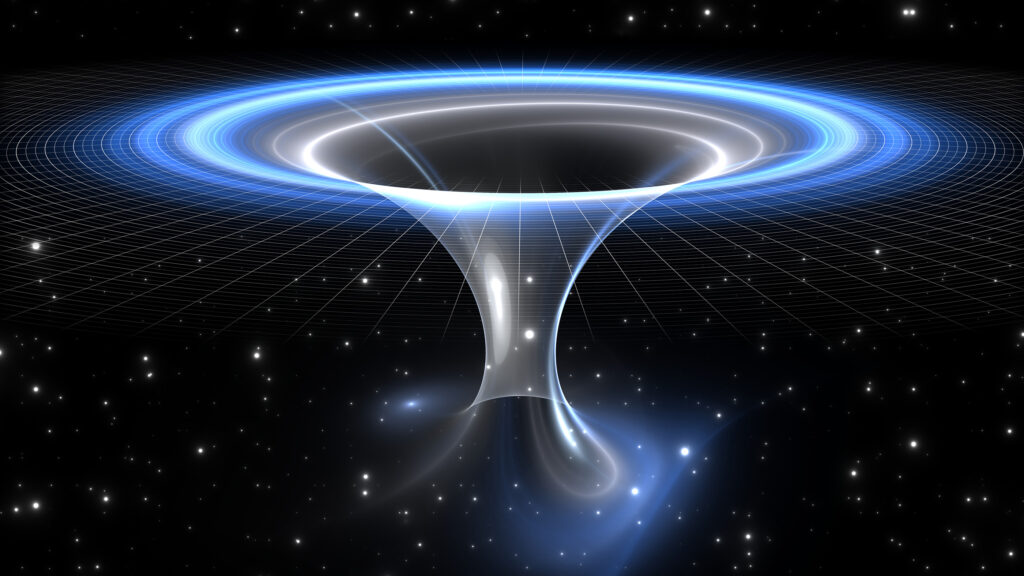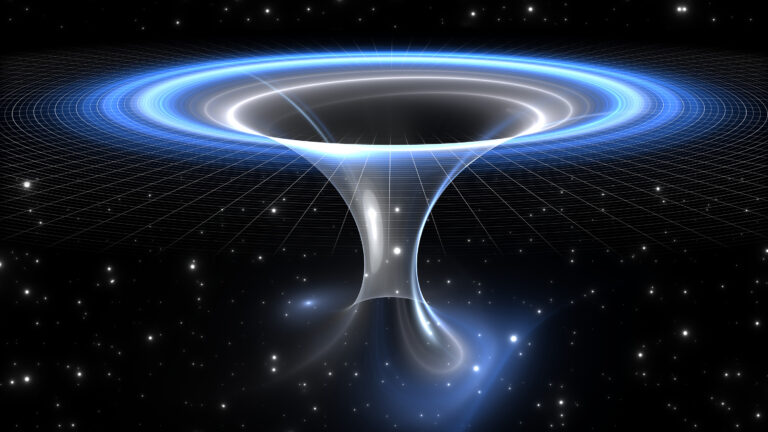Scientists Suggest That Entities Once Believed to be Black Holes Might Actually Be Wormholes
WHO DISCOVERED WORMHOLES?
In 1935, Albert Einstein and Nathan Rosen discovered the most straightforward solution to the concept of a wormhole, leading to the occasional reference to wormholes as “Einstein-Rosen bridges.” The foundation of their exploration involved the mathematical solution for a black hole, characterized by a singularity (a point of infinite density) and an event horizon (a region surrounding the singularity where nothing can escape). According to The Physics of the Universe, they extended this solution to incorporate the antithesis of black holes: white holes.
Theoretical white holes also possess a singularity, but their operation is in reverse compared to black holes; nothing can cross the event horizon of a white hole, and any material within the white hole is immediately expelled. Einstein and Rosen theoretically proposed that each black hole is paired with a white hole. Since these paired entities would exist in distinct locations in space, a tunnel—an Einstein-Rosen bridge, commonly known as a wormhole—would connect the two ends.
WHAT DO WORMHOLES LOOK LIKE?
Should such a wormhole exist, its appearance would be notably peculiar. The entrance would resemble a sphere, akin to the surface of a planet. Peering into it, one would observe light streaming in from the opposite side. The length of the wormhole tunnel could vary, and during the journey through it, one would witness distorted perspectives of both the origin region of the universe and the destination region.
As reported by New Scientist, a group of physicists from Sofia University in Bulgaria proposes that wormholes, theoretical passages connecting different parts of the universe, might be camouflaged as black holes. The enigma of black holes, entities that consume matter without releasing it, has long intrigued scientists. The question arises: where does the ingested matter go? The concept that black holes could serve as gateways to “white holes,” expelling streams of particles and radiation, has been a subject of speculation among physicists.

Combining these two ends could potentially create a wormhole, specifically an Einstein-Rosen bridge, a notion that challenges our current understanding of spacetime laws by suggesting the potential for unlimited time and space extension.
The researchers now propose that the “throat” of a wormhole might closely resemble known black holes, such as the massive Sagittarius A* believed to lurk at the center of our galaxy. Petya Nedkova, the team lead from Sofia University, remarked to New Scientist, “Ten years ago, wormholes were entirely within the realm of science fiction. Now, they are advancing to the forefront of science, and active exploration is underway.”
The team’s newly developed computer model, outlined in a recent paper published in the journal Physical Review D, suggests that the radiation emitted from matter discs swirling around the periphery of wormholes may be nearly indistinguishable from that surrounding a black hole.
Do not forget to share your opinion with us to provide you with the best posts !




0 Comments